Greek Honey
«ΕΛΛΗΝΙΚΟ ΜΕΛΙ»
The roots of beekeeping in Greece go back for millennia, to a time where mythology and history imperceptibly coalesced.
Aristaeus, born to Apollo and the nymph Cyrene, was the first man associated with honey. Raised by Gaia and the Horae, they drizzled nectar and ambrosia on the infant’s lips, making him immortal — a process strikingly reminiscent of how a bee becomes a queen.
The Muses taught him divination and medicine, while the Nymphs taught him viticulture, the cultivation of the olive tree, and beekeeping — the art that would come to define him. Aristaeus’ first stop was the Cycladic island of Kea, where he taught the inhabitants beekeeping. Aristaeus and the bee became the symbols of the island, appearing on the coins of Toulida, Karthaia, and Korisia.
Ancient Crete & the Minoans
In Crete, excavations in Phaistos revealed clay hives dating back to the Minoan era (3,400 B.C.). Also from this period are:
- A gold jewel depicting two bees and a honeycomb
- Another gold jewel shaped like a bee
In the ancient city of Knossos, a plaque was discovered with the inscription:
«Πάσι Θεοίς Μέλι: ΑΜΦΟΡΕΥΣ 1»
meaning:
“Honey is offered to all the Gods: one Amphora.”
Honey in Ancient Literature
The Odyssey mentions the Melikraton, a mixture of milk and honey. The orphaned daughters of Pindar were fed by Aphrodite with cheese, honey, and wine. Circe used the same foods to enchant the companions of Odysseus.
Hesiod refers to the “Symblus”, an early form of beehive — human-made and used for breeding bees.
The writings of Aristotle (384–322 B.C.) mark a major milestone in beekeeping knowledge, influencing Greece and the wider ancient world.
Law, Medicine & Tradition
The Athenian lawmaker Solon (640–558 B.C.) enacted regulations for beekeeping, including the required distance between apiaries:
“Swarms of bees placed at a distance of three hundred feet from previously established ones.”
— Plutarch, Bios Solonos
Hippocrates (462–352 B.C.) recommended honey widely, especially for the unwell.
When Democritus (460–370 B.C.) was asked how to remain healthy and live long,
he famously replied:
“The outside is oil of the body and the inside is honey.”
Pythagoras (570–490 B.C.) and his followers considered honey a central food.
Beekeeping Innovation
The mobile beehive was already used in ancient Greece. On Kythera, beekeepers used the Adonaki, the forerunner of today’s modern European hive — a concept later echoed in the design attributed to Lorenzo Lorraine Langstroth.
Greek Honey Today
With more than 180 nutrients, honey is naturally rich and remarkably complex. It contains carbohydrates, antioxidants, B-complex vitamins, trace elements and minerals such as calcium, magnesium, zinc, iron, and copper.
The extraordinary biodiversity of Greece, with over 1,300 endemic plants, combined with rugged terrain and many untouched regions far from industry, shapes the character of Greek honey. It is renowned for its distinctive flavor, aroma, density and overall quality, standing apart from honey produced elsewhere.

